Hey ladies and gentlemen; Coach Tyler here, and welcome to the ultimate study portal for the NSCA CPT exam. In this portal, you will find the full 25-chapter NSCA Study guide, an NSCA Practice test (The button at the top of the page), and NSCA flashcards to learn NSCA definitions.
Before we get started, bookmark/star this page so that you don’t lose it!
Get your copy of the NSCA CPT exam cheat sheet.
It helps immensely in studying for the NSCA-certified personal trainer exam and is provided by a veteran company in study materials, Trainer Academy.
My PTP students report cutting their NSCA study time and effort in half with Trainer Academy.
Benefit from the Exam Pass Guarantee and Retake Fee Guarantee. Plus, take advantage of my current discount code PTPJULY for 35% off the MVP Program (Ends July 14th, 2025).
Try it out for free here to see if it’s right for you, or read my detailed review for further insights.
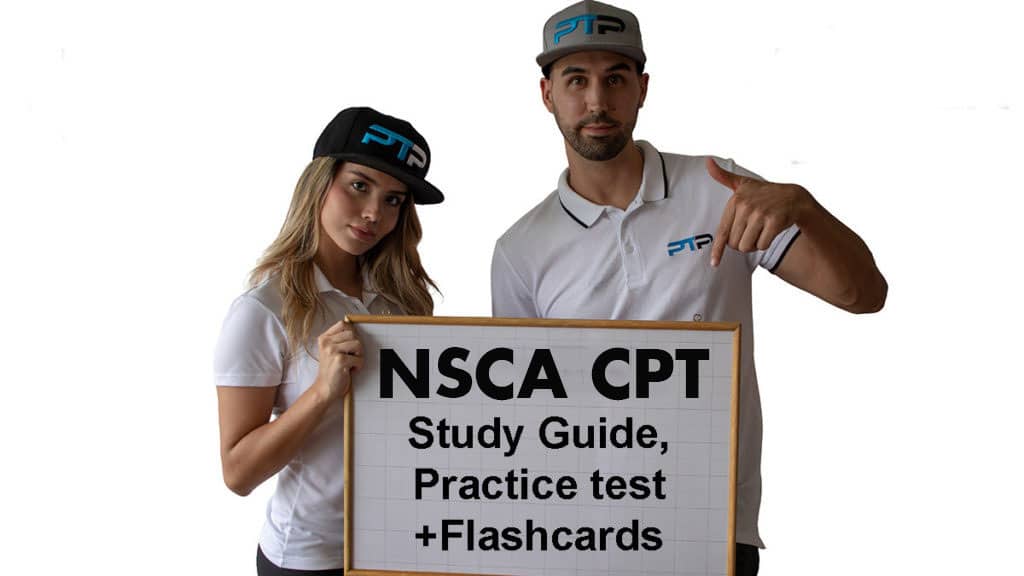
My Bitmoji counterpart will be walking you through the NSCA study guide to make sure that you are on track for passing the NSCA exam. Say hello to Tyler-Moji.

FREE NSCA Study Guide: 2nd and 3rd Edition Textbook 2025
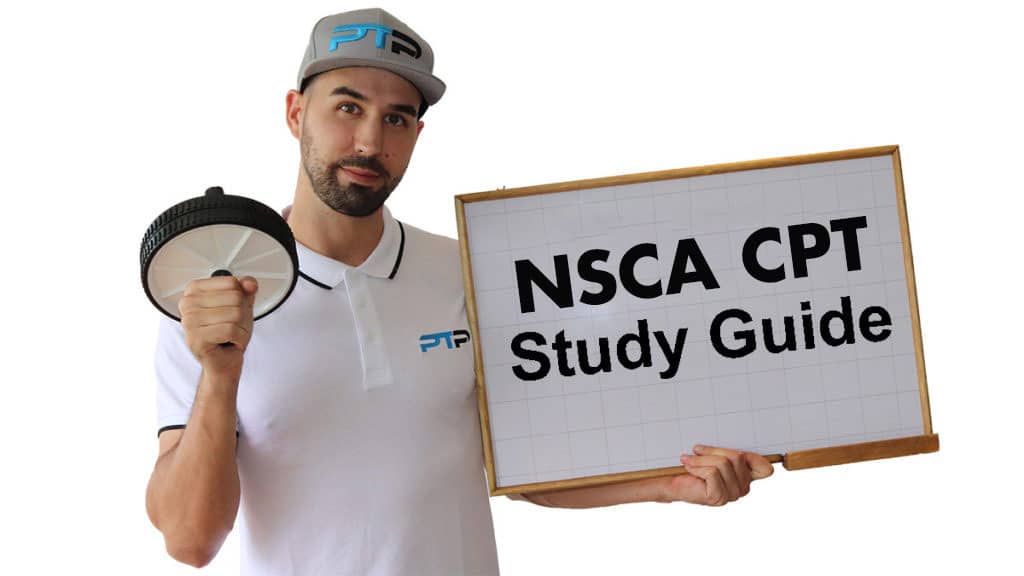
- Chapter 1: Structure And Function Of The Muscular, Nervous, And Skeletal Systems
- Chapter 2: Cardiorespiratory System And Gas Exchange
- Chapter 3: Bioenergetics
- Chapter 4: Biomechanics
- Chapter 5: Resistance Training Adaptations
- Chapter 6: Physiological Responses And Adaptations To Aerobic Endurance Training
- Chapter 7: Nutrition In The Personal Training Setting
- Chapter 8: Exercise Psychology For The Personal Trainer
- Chapter 9: Client Consultation And Health Appraisal
- Chapter 10: Fitness Assessment Selection And Administration
- Chapter 11: Fitness Testing Protocols and Norms
- Chapter 12: Flexibility, Body Weight, and Stability Ball Exercises
- Chapter 13: Resistance Training Exercise Techniques
- Chapter 14: Cardiovascular Training Methods
- Chapter 15: Resistance Training Program Design
- Chapter 16: Aerobic Endurance Training Program Design
- Chapter 17: Plyometric And Speed Training
- Chapter 18: Clients Who Are Preadolescent, Older, Or Pregnant
- Chapter 19: Clients With Nutritional And Metabolic Concerns
- Chapter 20: Clients With Cardiovascular And Respiratory Conditions
- Chapter 21: Clients With Orthopedic Injury And Rehabilitation Concerns
- Chapter 22: Clients With Spinal Cord Injury, Multiple Sclerosis, Epilepsy, and Cerebral Palsy
- Chapter 23: Resistance Training For Clients Who Are Athletes
- Chapter 24: Facility And Equipment Layout And Maintenance
- Chapter 25: Legal Aspects Of Personal Training
- NSCA CPT Appendix – The Business Of Personal Training
NSCA Flashcards for 2nd and 3rd Edition Textbook
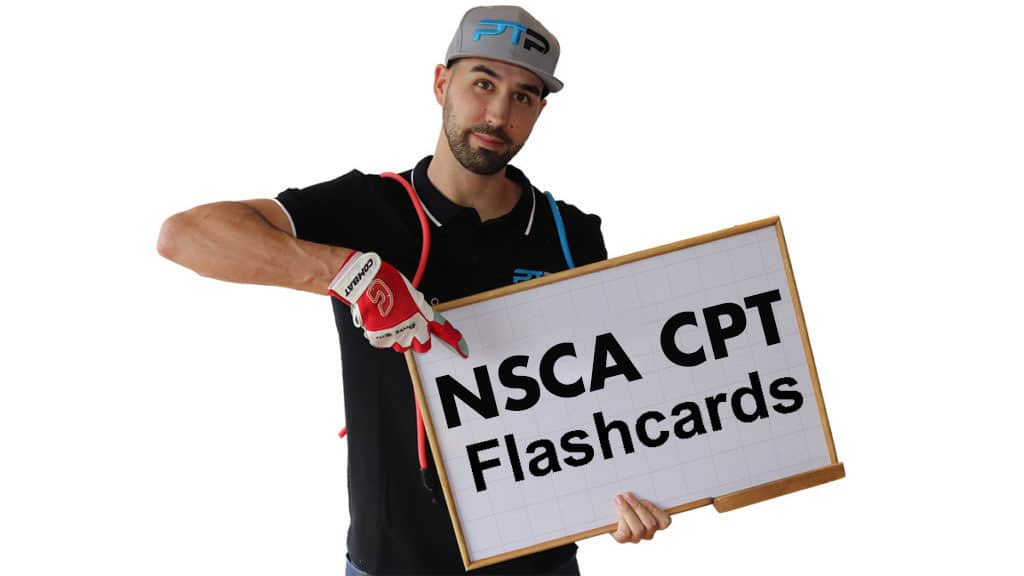
You will need the NSCA CPT textbook
You will need the official textbook from the NSCA to study for their exam.
The current textbook is called NSCA’s Essentials of Personal Training 3rd ed. Edition. It consists of 25 chapters and is written by Jared W. Coburn and Moh H. Malek.
Refer to the image on this page to pick up the correct textbook. I recommend either picking the book up from the NSCA website or Amazon.
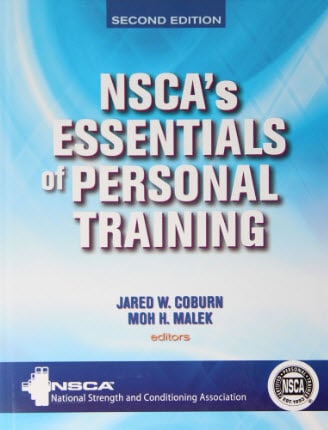
Top 10 Tips To Passing The NSCA Exam (Video)
Top 10 Tips To Passing The NSCA Exam (Podcast)
NSCA CPT Exam Breakdown
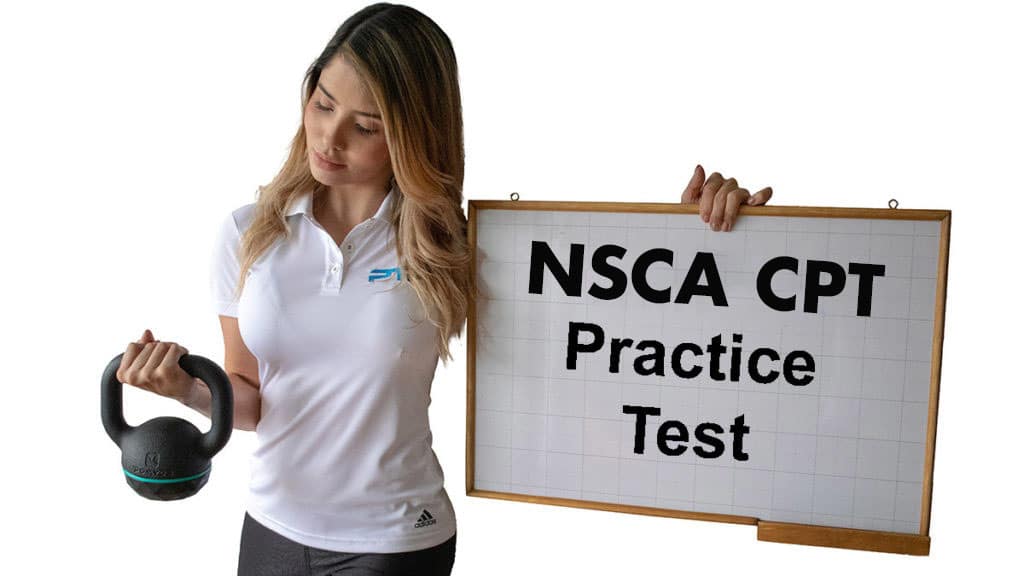
This NSCA practice exam is formatted the exact same way that the real exam will be. NSCA Breaks up its study material into four separate domains. Here are the relative percentages of exam questions for the 4 main categories of study.
- Client Consultation/Assessment: 25%
- Program Planning: 31%
- Techniques of Exercise: 31%
- Safety, Emergency Procedures, and Legal Issues: 13%
NSCA CPT 3rd Edition textbook Changes
The NSCA 3rd edition textbook launched at the end of 2021 and brought new changes to the excellent text offered by NSCA.
We have highlighted these changes here, as not everything was changed on our free pages due to the similarities between the 2nd and 3rd.
Check out the changes before going through our free study guide for the NSCA CPT.
These changes include:
- Updated research and references throughout the entire textbook.
- New and revised study questions to better test knowledge of the chapters.
- Activities of daily living examples and planes of movement changed throughout chapter 4.
- Explanations of the role of personal trainers regarding nutrition, who can provide nutrition counseling and education, and dietary supplement regulation updated to current practices and guidelines. All throughout chapter 7.
- Revisions of USDA MyPlate guidelines throughout chapter 7.
- New PAR-Q, physical activity readiness questionnaire, to reflect the newest changes to forms throughout chapter 9.
- Updates to the coronary artery disease risk factors, identification of medical conditions and diagnosed disease, result interpretation, the process of referral, and associated case studies updated to reflect the newest data. All throughout chapter 9.
- Revisions for normative and descriptive data associated with testing protocols and more tests discussed for speed, agility, power, posture, and movement assessment. Chapter 11.
- Brand new sections and guidelines for suspension training and manual resistance training, along with descriptions and photos for additional static flexibility, dynamic flexibility, body weight, suspension, manual resistance, and stability ball exercises. Chapter 12.
- New section and guidelines for common types of resistance equipment and descriptions and photos for additional core, back, arms, chest, hip, thigh, shoulders, and whole-body exercises.
- Updates to numerical guidelines for the program design variables and sample programs better reflect current research while fitting the general population over athletes. Chapter 15.
- Descriptions and photos for lower and upper body plyometrics are enhanced. Chapter 17.
- New guidelines for training pregnant women. Chapter 18.
- Updates to the stats and references for obesity and overweight populations. Chapter 19.
- Updates to numerical guidelines for program design variables and all samples. Also made it more relevant for athletes, specifically. Chapter 23.
- New section for emergency response plans. Chapter 24.
- Updated guidelines to benchmarks in other NSCA books. Chapter 25.
- Changes throughout the text to numbers, like blood pressure readings and similar categorical standards, have recently changed.
- A brand new section of Business was added as an Appendix chapter.
These changes are not as significant as some other organizations recently. Thus, we have not changed our free study guide materials, except for adding the Appendix section that deals with business.
NSCA CPT Study Tips
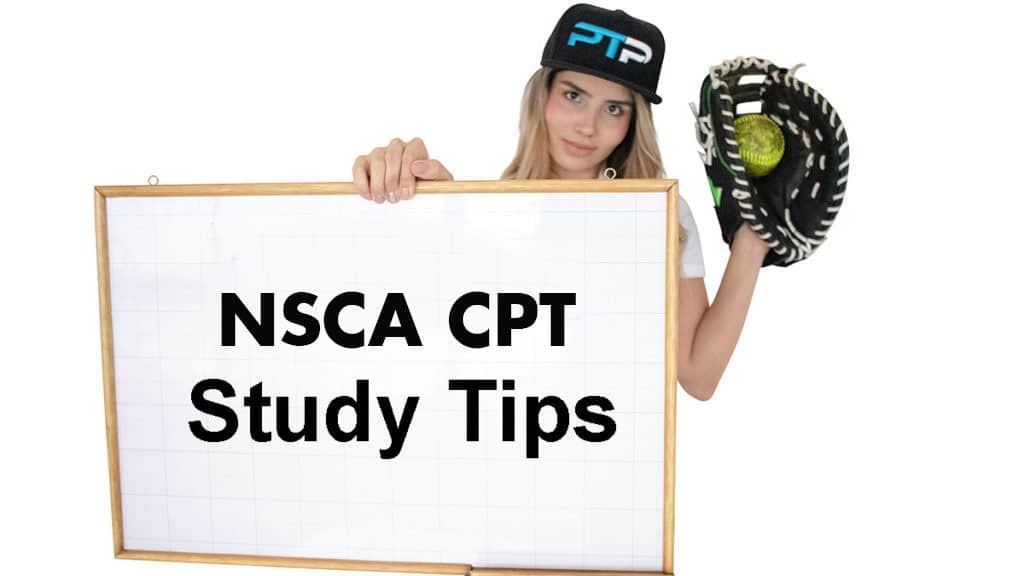
The NSCA Study guide that is found on this page was never meant to replace the full 2nd edition of the textbook. It was meant to be a supplemental study tool while you go through the full textbook, as I recommend.
Here are some additional study tools/tips that I highly recommend you use alongside the free materials on this page.
A premium NSCA study guide
Although the NSCA free study guide on this page is a great place to start, it is far and away the best study guide.
And trust me; I have basically gone through every single study guide available.
Overall, my study guide contains a bunch of information but it doesn’t really guide you in the most surefire way for what to study to pass the exam.
If you want a study guide that tells you exactly what you need to study to pass the exam, I highly recommend checking out the Trainer Academy study guide here. This study guide avoids all the fluff from the massive textbook and pinpoints the most important topics to learn to pass the exam in the shortest time. This can also be used as a form of cram guide if you have a deadline coming up.
Many more NSCA practice exams
The NSCA practice exam that I have on this page is only 50 questions long. The full NSCA CPT test consists of 155 questions from all four domains of study.
To have a good sense of whether or not you will pass the real NSCA test, I recommend taking at least 3 to 4 full practice exams.
The students of mine that have returned from the exam told me that they failed it with the ones that never even attempted a full practice test. If they had, they would have realized that they were definitely not prepared for the real thing.
The best NSCA CPT practice exams Were created by the team over at Trainor Academy. Just like their study guide, these practice tests are spot on to what you will see on the real exam once you take it.
If you can pass all four of their practice exams, the real test will be a walk in the park.
Spaced repetition NSCA flashcards
The NSCA Flashcards on this page are a good place to start when it comes to learning definitions from the NSCA textbook.
But overall, my flashcards only consist of 100 in the deck. There are more than 500 flashcards and definitions that you will need to know.
On top of that, my flashcards are old-style flashcards. I highly recommend trying out intelligent spaced repetition flashcards. They will significantly reduce your study time and will help you keep all of these definitions in your long-term memory for much longer.
Spaced repetition flashcards work like this: every time you are shown a flashcard and answer it, you get to rate how easy or difficult it was to recall the answer. Over time, your easy cards show up less and less, while you are more difficult-to-remember cards keep on showing up until you master them.
This way, you skip the information you already know and focus only on your weak areas. This significantly reduces your study time and will concrete this information in your head with forced repetition.
NSCA Mnemonics for better memorization
I highly suggest you create your own mnemonics while studying for the NSCA CPT test. These will help turn difficult-to-learn topics into more fun and digestible stories for you to digest.
I suggest using funny characters like talking animals, superheroes, dinosaurs, etc., to make your story and Mnemonic more memorable.
Basically, the weirder you can make your story, the more likely you will remember it during the test and beyond.
NSCA Cheat Sheet
A cheat sheet summarizes some of the most important topics, such as distortions or formulas.
You can create one of your own or use the one we have here by clicking on the button below.
There you have it, ladies and gentlemen, my study portal for the NSCA CPT has ended. I suggest going over all of the chapters as often as possible until you have all of the information locked down before taking the exam. Good luck with all the studying!
FAQ’s About NSCA cPT Certification
Is the NSCA CPT exam hard?
The difficulty of the NSCA-CPT exam varies depending on an individual’s background and preparation. Some sources indicate that the exam is challenging, with a 66% pass rate for first-time takers in 2022. It is generally advised that even those with a fitness background should prepare thoroughly for the exam.
What is NSCA CPT certification?
The NSCA-CPT confirms that the holder has the knowledge and skills to create and implement safe and effective exercise programs for clients. This certification is well-regarded for its focus on evidence-based practices and scientific principles in personal training.
How long does it take to get NSCA CPT?
The time it takes to get the NSCA-CPT certification varies based on individual study time, background, and preparation. There is no specific duration mentioned, as it depends on how quickly a candidate can prepare for and pass the exam.
What is the difference between NASM and NSCA?
The NASM certification is known for its frequent sales pitches, easier training templates, and higher cost. In contrast, the NSCA is a not-for-profit organization that emphasizes professional-level education and has more stringent recertification policies requiring a higher number of Continuing Education Units (CEUs).




Thank you for providing these free resources! I appreciate it so very much!
Hey Linda, I am glad that you are enjoying the study materials.